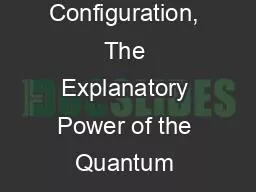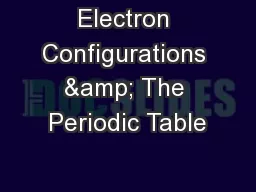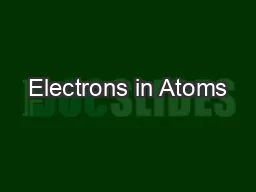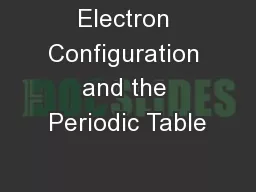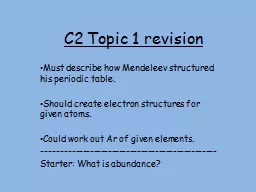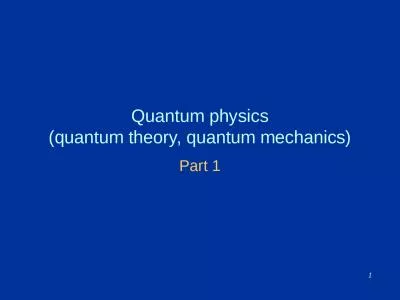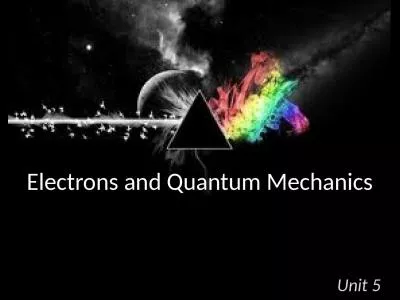PPT-8.4-8.6 Electron Configuration, The Explanatory Power of the Quantum Mechanical Model,
Author : playhomey | Published Date : 2020-08-29
Electron Configurations Valence Electrons and the Periodic Table The periodic table is arranged by grouping elements with similar chemical properties connection
Presentation Embed Code
Download Presentation
Download Presentation The PPT/PDF document "8.4-8.6 Electron Configuration, The Expl..." is the property of its rightful owner. Permission is granted to download and print the materials on this website for personal, non-commercial use only, and to display it on your personal computer provided you do not modify the materials and that you retain all copyright notices contained in the materials. By downloading content from our website, you accept the terms of this agreement.
8.4-8.6 Electron Configuration, The Explanatory Power of the Quantum Mechanical Model,: Transcript
Download Rules Of Document
"8.4-8.6 Electron Configuration, The Explanatory Power of the Quantum Mechanical Model,"The content belongs to its owner. You may download and print it for personal use, without modification, and keep all copyright notices. By downloading, you agree to these terms.
Related Documents

